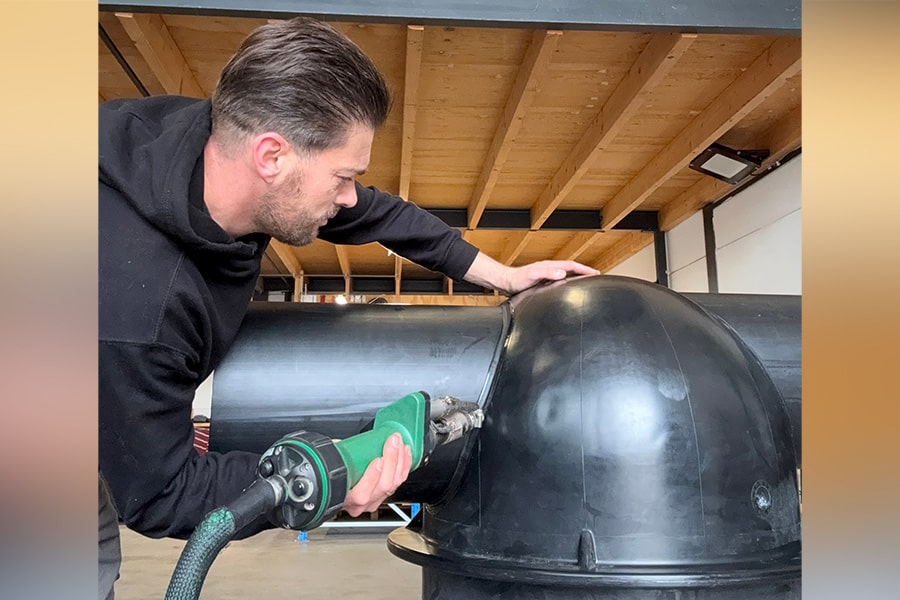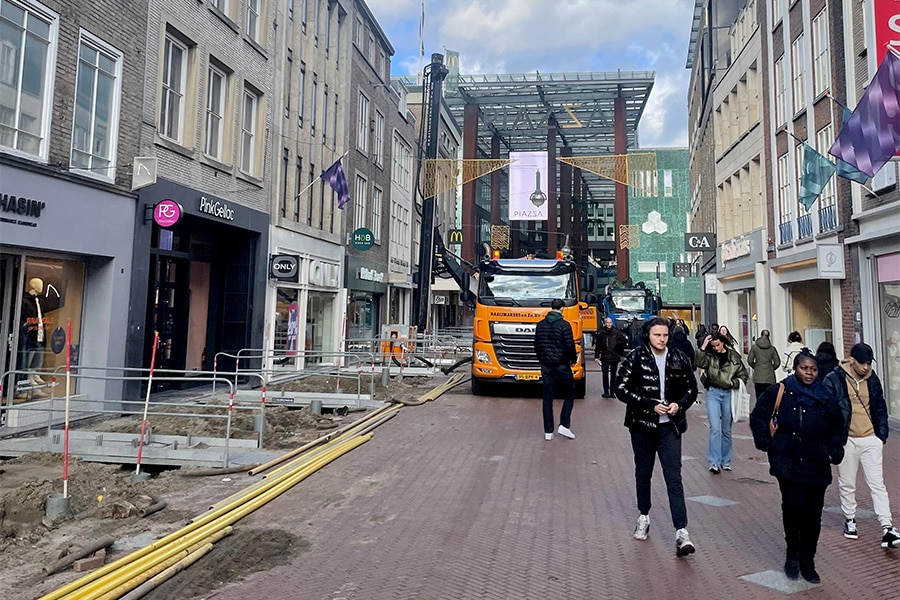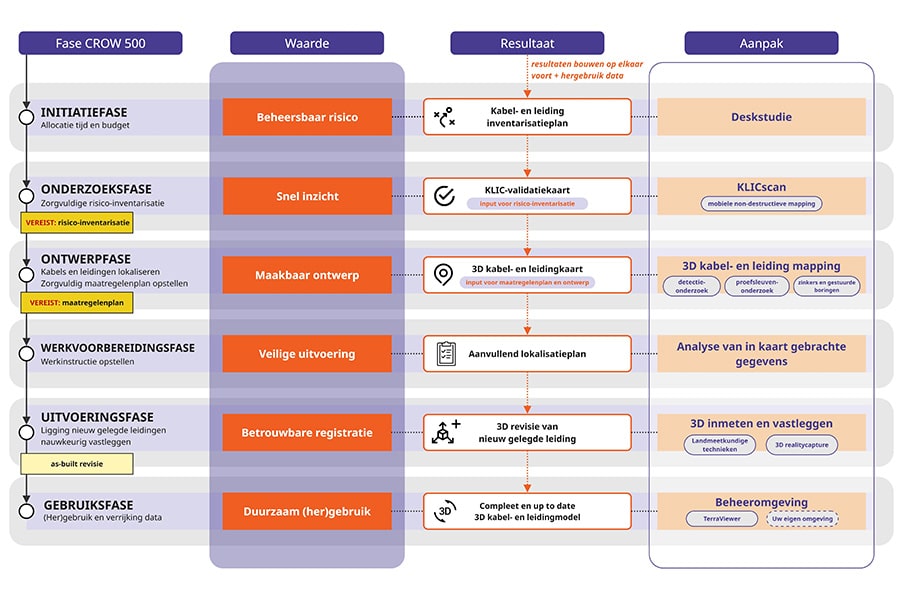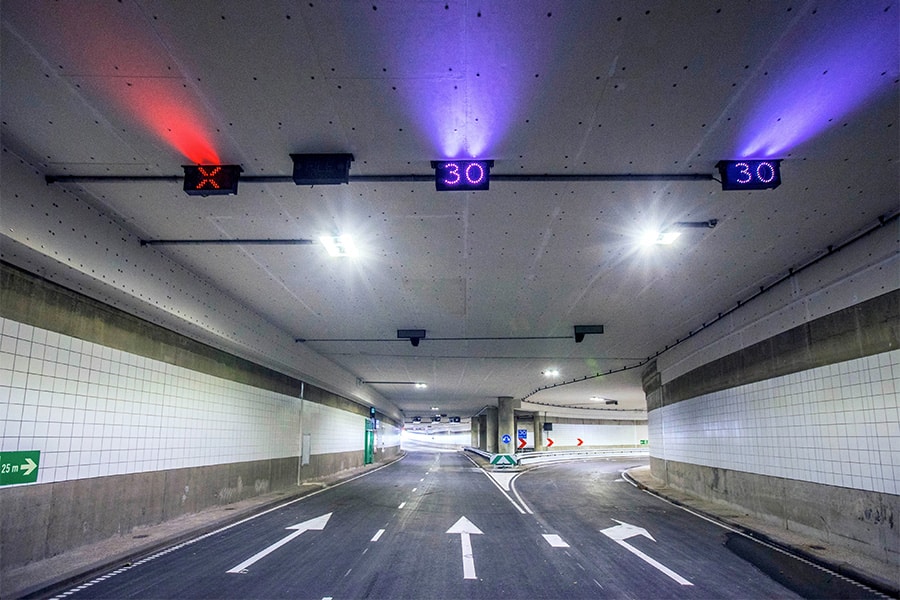
Archaeological survey reveals Roman infra work
When René Isarin, archaeological consultant for the province of South Holland, begins talking about the archaeological research along the RijnlandRoute, you listen intently. It is like an exciting book ... in which Emperor Hadrian gave the order (around the year 120) to fortify the border roads of the expanding Roman Empire.

"If you're going to build somewhere, you have to take care of archaeology in time."
"Archaeological research is a long process, sometimes very difficult for the client. It starts with desk research, which can be followed by drilling to investigate the soil structure. These results may then prompt the digging of test trenches. The final step is to excavate a site, if there are no possibilities to preserve the site in the soil. During the archaeological investigation, decisions naturally have to be made about the process," outlines René. "I came into the picture with the RijnlandRoute when the desk and drill research had been done. There were plans of action ready, which I had to review and put into action. That was in 2016." The surveys indicated a high probability of finding archaeological material.
René continues his story: "There were three plan areas to investigate, namely the future Ommedijk junction, the Leiden West junction -where the Tjalmaweg ends - and the Tjalmaweg itself, where Roman infrastructure had already been found in the 1980s. Later, Lammenschans was added as a fourth location, with archaeology from the Spanish period, the period of the Relief of Leiden. Meanwhile, the field research has been completed, all that was found is now being worked out, drawings are being made. For Ommedijk and Leiden-West we have finished the report, the finds along the Tjalmaweg and Lammenschans will be on paper in early 2021. Afterwards, I will provide a seminar on behalf of the province, to give people a piece of the experience."

More than 10,000 wooden poles in one kilometer
One of those ancient roads we mentioned at the beginning is deep underground in the area of the RijnlandRoute: "In 2014, the Environmental Impact Report for the RijnlandRoute was drawn up, that's when the first specific investigations took place. We already knew from the 1980s that Roman remains were located along the Tjalmaweg in Valkenburg, so it was natural to expect finds to be made along the RijnlandRoute as well." René continues his story, about Emperor Hadrian, who around 120 A.D. had ordered that the border roads of the Roman Empire be given an "upgrade. "The existing road had to be reinforced. To this end, thousands of oaks were felled in Germany, which were made into poles there. These were transported to us by water. Judging by the annual rings of the poles we found, the felling must have taken place in 123/124 A.D. Thus, the necessary poles were delivered as packages all along the Rhine. The logs were cleaved into six parts, pie slices, if you were to look at the end. Handy, because you work those into the ground more easily."
The wooden poles were driven into the ground every 20 to 30 cm. "We even know by whom! Just as contractors today have their logo on equipment, the 'pile placers' also had their initials carved into the piles," René says. The reinforced road must have been about 6 meters wide, with piles on the left and right for support. "Earth was poured between the piles and every 2 meters they placed tension piles to reinforce this earth track. The road rose about one meter above the landscape slopes. Clever engineering by the way, because this method of construction took into account the tidal landscape." The unusual thing about the situation is that on the spot where anno 2020 infra craftsmen are working very hard on the road, Roman craftsmen were doing the same thing almost 1900 years ago. "That has to do something if you have an infra heart," sighs René.

500 years of Roman occupation
René sees the similarities in method, looking at then and now. "Imagine how clever it was to be so involved with planning and structures from as early as 70 BC. The Romans were here for about 500 years. Infrastructure was super important to them, just as it is to us. Today, the N206 is geared toward the flower industry. In Roman times the economy flourished and ports were built, trade took place, for example in grain. There was interaction between soldiers and civilians and settlements were founded."
As a tribute to that time, there will be a work of art at the site of the HOV stop, made with the original Roman wood. "This way we give residents and visitors something back of what took place on this historic site almost two millennia ago," René concludes.
Archaeology and the RhinelandRoute
The province of South Holland is rich in archaeology. Archaeology tells the story of our history and the many cultures the province has traditionally been rich in. The province would like to survey the sites in the RijnlandRoute project area and, where necessary, secure, conserve and preserve archaeological finds. In this way, the province of South Holland is protecting archaeological heritage and thus cultural history and making it accessible to the widest possible audience.




